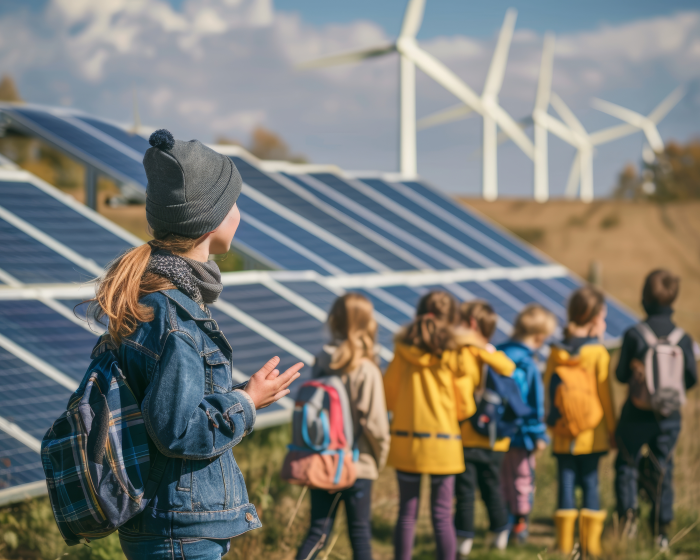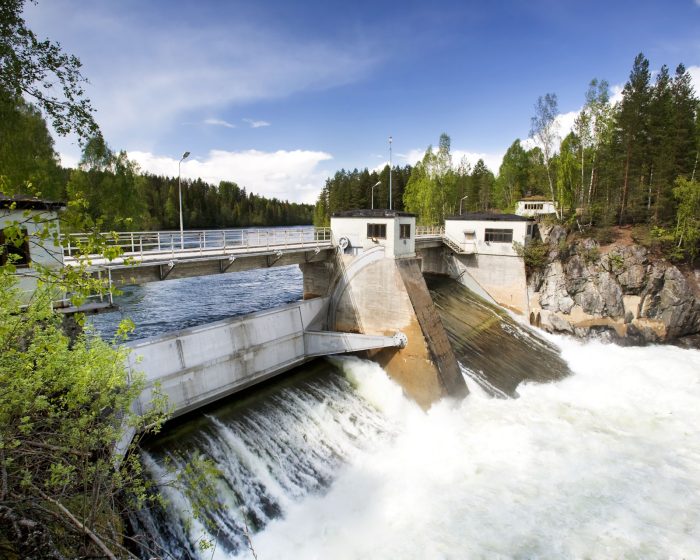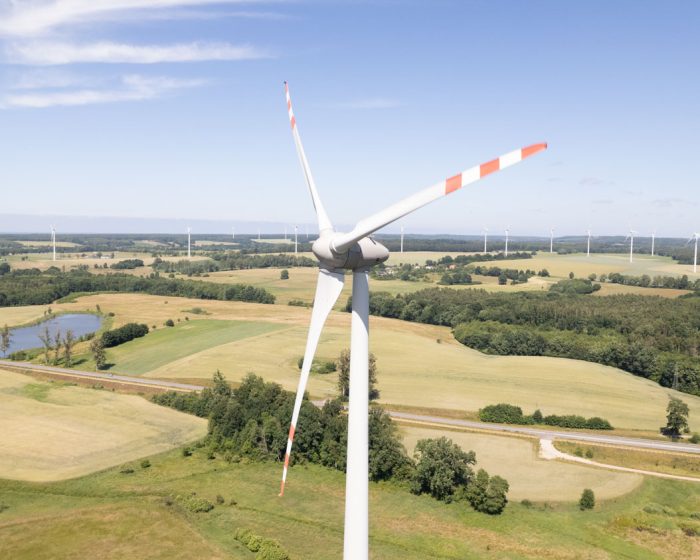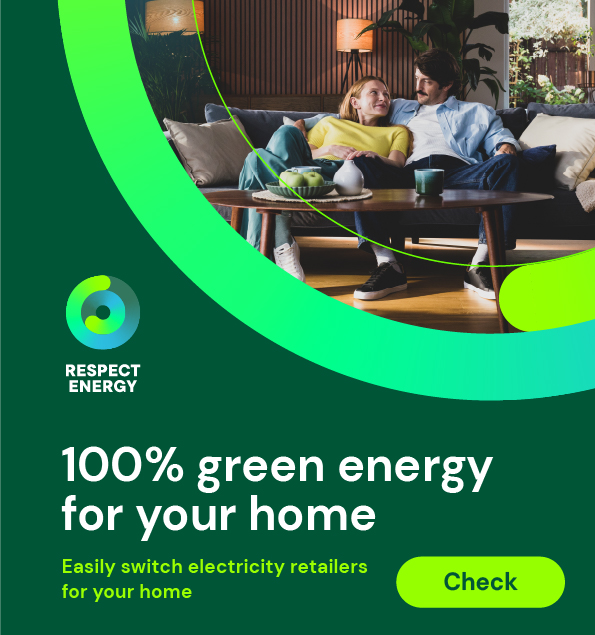How does renewable energy work? Basic facts on RES
Renewable energy is energy from natural sources which do not run out or which renew themselves in a relatively short time. But how does it get into our homes, schools or businesses in reality? What technologies are behind this process and how do they work?
Imagine a house that produces its own electricity, or a wind farm that powers an entire city. Sounds impressive, but what happens along the way before the energy reaches the socket?
How do natural energy sources become the power we use in our homes?
Solar panels
- Photovoltaic systems, the technology of harnessing solar energy, is one of the most recognisable ways of using renewable energy sources. Photovoltaic panels work through the photovoltaic effect. When the sun's rays fall on silicon wafers, the energy of the light sets electrons in motion and in this way direct current is created. The inverter then converts the direct current into an alternating current that is adapted to domestic appliances.
Over the past few years, technologies to increase the efficiency of photovoltaic panels have been developed more and more intensively. Examples include solar tracking systems, which automatically position panels at the optimum angle, increasing energy production by up to 20-30%. In addition, the development of panels based on perovskites, modern semiconductor materials characterised by high efficiency of converting light into electricity which can be mounted on building windows, is opening up new possibilities in urban architecture, such as the erection of buildings that actively produce energy (so-called zero-energy buildings) and attractive visual appearance of photovoltaic systems integrated into building facades and other structural elements.
The panels are mounted on roofs, facades or on special ground-mounted structures. In Poland, a 5 kWp photovoltaic installation can produce around 5 000 kWh of energy per year, which is enough to cover the annual energy consumption of an average family of four.
Wind turbines
- Wind energy is one of the most developed and popular sources of renewable energy. Wind drives wind turbines whose blades turn a rotor, converting the kinetic energy of the wind into electricity. Large wind farms, consisting of dozens or even hundreds of turbines, supply electricity to the electricity grid, contributing to the energy needs of entire regions. Smaller groups of wind turbines are more and more often used locally, for example, on individual farms, where they can support stand-alone energy systems.
One modern 3 MW wind turbine can produce enough energy to power up to 3,000 households for a year.
Hydroelectric power plants
- Hydroelectric power plants are one of the oldest and most efficient sources of renewable energy, harnessing the power of flowing or dammed water to produce electricity. A key component of such power plants are hydroelectric turbines that rotate against the flow of water, driving generators that produce electricity.
The most common are impoundment hydropower plants, where dams are built on rivers to create reservoirs of water. The dams help to control the flow of water, allowing continuous energy production and protection from flooding. Alternatively, diversion (run-of-the-river) power plants do not require large reservoirs and are less invasive to the environment. On the coasts, tidal power plants, which use the movement of ocean tides, are becoming increasingly important.
In addition, the development of modern technologies, such as micro-hydropower, makes it possible to exploit the potential of smaller watercourses, opening up new opportunities for local energy production, for example for the needs of small communities or farms.
Biogas plants
- Biomass and biogas plants are energy sources that work particularly well in agricultural areas. Biomass, such as wood or farming waste, can be burned to produce heat and energy. Biogas plants, on the other hand, convert organic waste into biogas which, after purification, becomes a fuel with similar properties to natural gas.
One medium-sized agricultural biogas plant can process up to 20 000 tonnes of waste per year – an amount that could fill more than 15 floors of the Palace of Culture and Science in Warsaw – and at the same time produce up to 5 GWh of energy, enough to power around 2 000 households for a whole year.
What is more, a 1 MW biogas plant is capable of producing around 8 GWh of electricity per year, which is considerably more than photovoltaic installations (around 1-1.2 GWh from 1 MW) or onshore wind farms (around 2-3 GWh from 1 MW, depending on location and wind conditions).
Biomass and biogas are not only sources of clean energy, but also a way to sustainably manage organic waste. In agricultural areas, where this type of waste is generated in large quantities, converting it into energy makes it possible to cut greenhouse gas emissions, reduce the need for landfilling and close the environmental cycle by using the digested matter as fertiliser. In this way, biomass and biogas plants contribute to a more sustainable and efficient energy generation model.
Geothermal energy
- Geothermal energy uses heat from the Earth's interior, which is available at various depths. Shallow ground layers, up to about 100 metres deep, use heat pumps, which are ideal for heating and cooling residential and commercial buildings.
Deeper boreholes, ranging from several hundred to several thousand metres, provide access to geothermal waters with temperatures ranging from 30°C to over 150°C, depending on the location and depth. These waters can be used not only for heating, but also to produce electricity in geothermal power plants.
Modern technology to support RES
- With advances in technology, energy storage has become more efficient. Lithium-ion batteries allow excess energy produced by RES to be stored for use during peak hours. Artificial intelligence plays a key role in managing the flow of energy on the grids, optimising its delivery to consumers. The development of new materials, such as perovskites, increases the efficiency of photovoltaic panels while reducing their production costs.
Another breakthrough in energy is hydrogen technologies, which allow energy to be stored in the form of hydrogen. Hydrogen is obtained by electrolysis – the separation of water into hydrogen and oxygen using an electric current. The energy required for this process comes from renewable sources such as the sun or wind, making it completely environmentally friendly. The resulting hydrogen, as a light and flammable gas, is collected and stored in special tanks under high pressure or in liquid form at low temperatures. Hydrogen is used as a versatile fuel – it can fuel vehicles, power factories or support energy production where it is needed most. In this way, hydrogen technologies not only stabilise the energy system, but also enable the efficient storage of surplus renewable energy, bringing us closer to achieving climate neutrality.
The future of RES
Renewable energy production is changing the global energy landscape. Analysts predict that RES energy production could double by 2030 and some countries could become completely independent of fossil fuels. In Poland, the development of wind farms, hybrid systems and energy storage will be key to achieving climate goals. Imagine a future where your home produces more energy than it consumes and you sell the excess to your neighbours – this is no longer science fiction, it is a reality that is fast approaching.
Read also

The importance of renewable energy: the road to a cleaner future
Have you ever wondered what the world would look like if we exploited the full potential of renewable energy sources? Imagine cleaner air, lower energy bills and a stable electricity supply in every part of the world. Sounds like utopia, doesn’t it? But these goals are more achievable than you might think. Renewables are more […]

Water and heat from within the earth: the key to cheap and stable energy
Many renewable energy sources are dependent on unpredictable external factors such as weather or simply generate less energy due to changing seasons. Therefore, to ensure a sustainable energy mix, it needs to be reinforced with more predictable sources such as hydropower and geothermal energy. How does hydropower work? Hydropower is one of the oldest and […]

Wind in the sails of RES – wind energy in practice
Wind is the most popular source of clean energy. Currently 53 countries in the world are developing wind energy, 27 of which are in Europe. The leader in this field is Denmark, which generates almost 50% of its electricity from wind farms.[1]In Poland, this is more than 16% of total energy production[2]. Globally, the five […]




